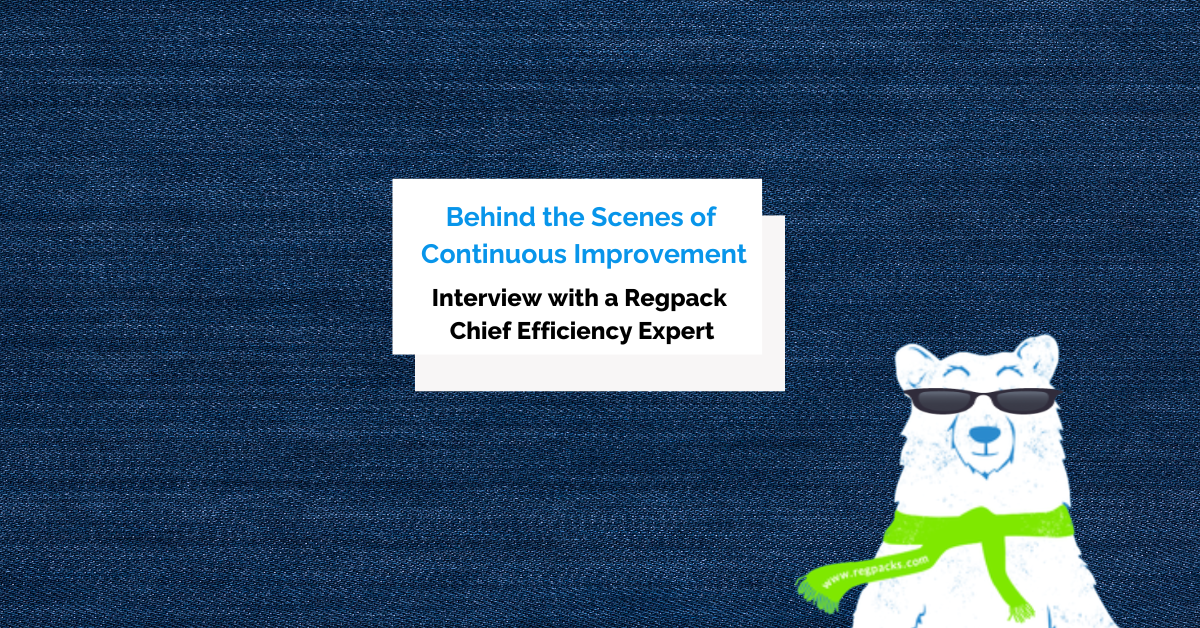No matter what kind of business you run, revenue and customer payments should always be as smooth and uninterrupted as possible.
But if your business uses recurring billing, it’s even more important that you keep your customers happy and payments flowing regularly.
The subscription business model depends on charging customers an advance fee for the services that a business will deliver over the agreed period of time. So instead of a one-off exchange of goods for money, you’re entering into an ongoing customer relationship.
While subscription billing can make your cash flow more reliable, it only works if those payments aren’t interrupted. In this post, we’ll walk you through five of the most common recurring billing mistakes to watch out for.
Jump to section:
Mistakes in Revenue Recognition
Losing Revenue Because of Failed Payments
Building an Unsustainable Billing Infrastructure
Creating Unnecessarily Complex Invoicing Processes
Insufficient Reporting Capabilities
Mistakes in Revenue Recognition
By nature, a subscription service company receives payment before it has delivered all of the services. Customers often pay for a month’s worth of membership or service at a time.
Accounting rules dictate that income cannot be considered revenue until the product or service has been delivered—so that customer’s payment is not considered earned revenue until the month is complete.
Until then, the payment must be accounted for as deferred revenue. This distinction is called revenue recognition.
For example, let’s say your customer purchases a subscription to your service. In the first month, they pay a $50 account activation fee along with the first month’s subscription ($25). Your accounting ledger entry might look like this:
| Account | Debit | Credit |
| Accounts Receivable | $75 | |
| Earned Revenue | $50 | |
| Deferred Revenue | $25 |
At the end of the month, you can move that $25 into the earned revenue line, because you’ve held up your end of the bargain by providing the agreed-upon service for the contractual length of time.
But why does this distinction matter, you ask? After all, it seems like semantics—and a distinction that will only be seen internally, anyway.
However, tracking deferred revenue is part of the generally accepted accounting principles (GAAP).
It is enforced under ASC 606, a new revenue recognition standard that aims to increase financial reporting consistency by mandating that revenue be recognized at the point when customers receive its value.
Under ASC 606 guidelines, the company must follow a five-step model of revenue recognition.
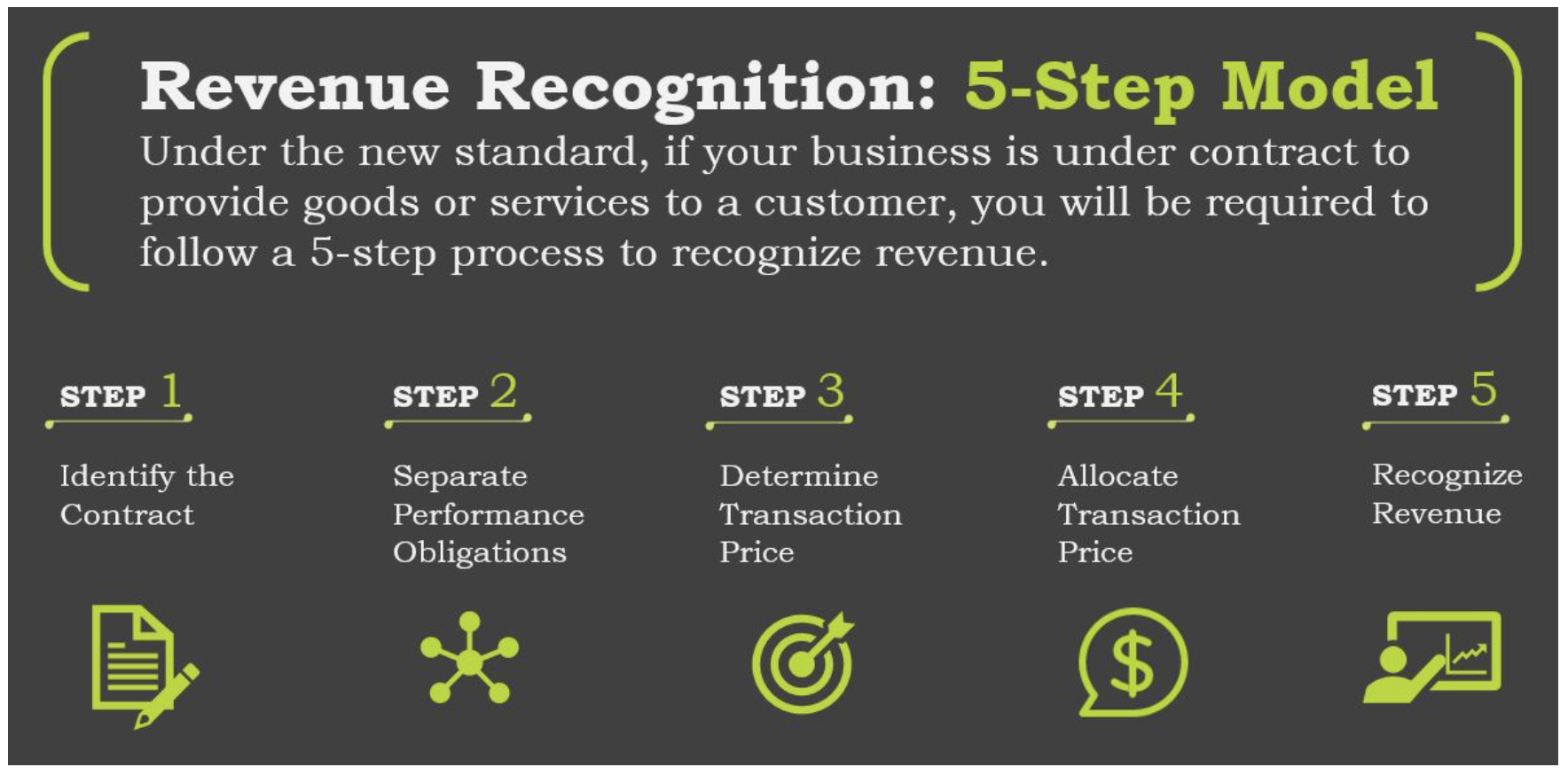
Source: Dean Dorton
This model includes identifying the contractual exchange, determining the obligations of both parties, and determining the price of the transaction.
The payment must then be properly allocated and only recognized as revenue when the obligations have been met on both sides.
Small businesses who don’t bother following GAAP and ASC 606 policies can run into trouble when external parties need to see their financial information, such as:
- Investors
- Shareholders
- Board of directors
- Financial institutions
- Auditors
Also, regulatory compliance isn’t the only reason to distinguish between earned and deferred revenue. There are logistical reasons as well.
Accurate accounting methods are crucial for potential investors who are calculating cash flow and liability. And when calculating corporate tax, it’s important to know which revenue should be carried forward into a future period.
Finally, what if the customer cancels their account and requests a refund in the middle of the billing cycle?
Most monthly subscription services have non-reimbursement policies—but annual subscriptions are a different story.
If a customer pays in January and cancels in March, your service contract will likely stipulate that they are owed a refund for the period from April through December.
In conclusion, revenue recognition can be a very sensitive segment of your accounting practices.
Any mistakes made here can cause serious problems down the line and can even lead to trouble with the law.
Therefore, it’s imperative that you keep a close eye on revenue recognition and stay on top of new regulations and practices.
Losing Revenue Because of Failed Payments
It’s undeniably painful when your customers decide to end their relationship with you—but not all customer churn is deliberate. In fact, it is estimated that anywhere from 20-40% of churn is involuntary.
Involuntary churn is the term for lost revenue due to accidental reasons, such as:
- Credit card expiration
- Insufficient funds
- Internet connectivity failure
In a recurring billing cycle, it’s important to understand that every payment goes through several processing stages before reaching your business bank account. Every payment gateway, payment processor, and card network is just another potential point of failure or interruption.
Because there is a multitude of ways a payment can go wrong, you should implement a series of fail-safes to help catch failed payments and make sure that if anyone wants to pay you, they can.
So how can you avoid this kind of lost revenue?
The simplest answer is to employ dunning, a term used to describe the process of following up on money owed. You’ve probably experienced a dunning email yourself.
Here’s an example from Google Workspace:
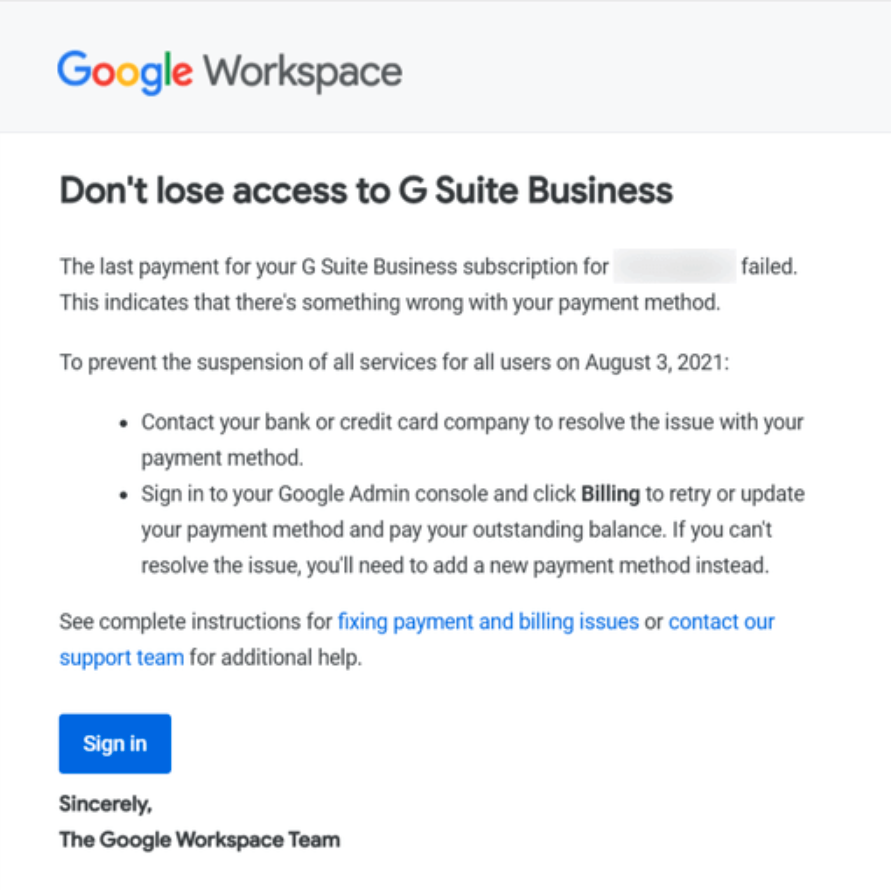
Source: Regpack
Essentially, dunning is a way of tracking failed payments and staying in touch with your customers until the problem is resolved. Here are a few dunning best practices you can use in your own processes:
- Don’t send pre-dunning emails—While pre-dunning communication was standard practice in past years, modern customers are already receiving notifications of expiring credit cards from their banks. A pre-dunning email will likely just be redundant and irritating.
- Provide a grace period—Most failed payments have to do with expired cards, errors with the payment gateway, or insufficient funds. These things can often be easily resolved on the customer’s end. Always start by sending a first dunning email to notify the customer of what happened, then give them a few days to rectify the problem on their end.
- Use clear emails—The trick to resolving failed payments quickly is to use effective and efficient communication. The best dunning emails are empathetic, concise, and remind the customer of what they stand to lose if the issue isn’t resolved.
- Make it easy to pay—Every dunning email should include a clear CTA button that takes the recipient straight to their account dashboard or payment page. And once they get there, they should see several payment methods so they can pick the one that works best for them.
Finally, don’t forget to let technology work for you. The best payment processors include automation.
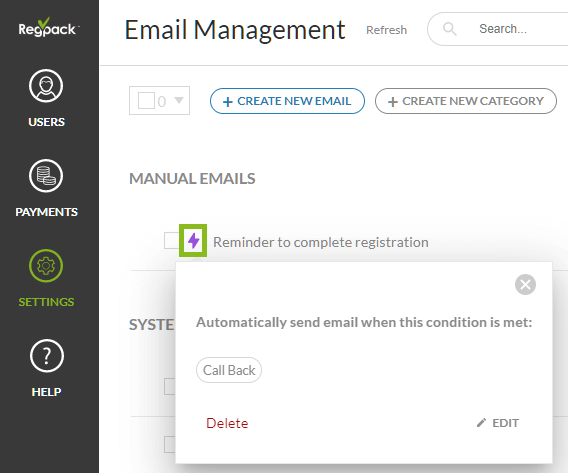
Source: Regpack
Systems such as Regpack’s trigger-based communication send email reminders based on templates you’ve set up ahead of time. That way, you don’t have to get in touch with every customer manually if—or when—their payments fail.
Building an Unsustainable Billing Infrastructure
Most subscription-based services have to make the decision between building their own custom billing system or using an out-of-the-box solution that’s already available.
For growing businesses with massive goals, it may seem the smartest to invest in custom billing infrastructure—but custom isn’t always best.
As the Zuora blog puts it:
“Not only will you lack the flexibility to change pricing quickly to meet market demand, but your product will suffer as you shift engineering resources from your core product to build a billing system. Now you not only get to develop and iterate a world-class product, but you also get to develop a responsive billing system to go with it!”
Your billing system should be able to keep up with you as you scale. For instance, it would be useful if it could adjust to things like:
- Multiple payment methods
- Pricing changes
- Discounts and prorations
- Experimental pricing changes or subscription tiers
- Usage-based billing
- Automated customer communication
If your billing infrastructure isn’t flexible enough to support third-party integrations or changing price structures, you’ll end up doing more work down the road to meet your changing needs. Managing your billing system in-house can quickly become a full-time job.
Moreover, building your own billing infrastructure also means keeping up with changing regulations as your customer base grows.
Staying in compliance with regulations like the GDPR, ASC 606, and PCI-DSS can easily become difficult to manage in-house.
Instead, it’s often more feasible to use third-party billing solutions that are built to handle the needs of a scaling subscription-based company.
Choosing a provider that handles these issues for you ensures you don’t waste money maintaining a billing infrastructure on your own.
Creating Unnecessarily Complex Invoicing Processes
If you want to get paid regularly, one thing makes sense: make the payment process as simple as possible.
Your invoicing process should be able to streamline any changes to a customer’s account. If the customer switches plans or combines multiple subscriptions with different terms, they shouldn’t be receiving a generic copy/paste invoice for each small change.
Instead, customers should receive consolidated invoices in advance. Simplify and customize each invoice to the user-payment methods listed.
Customers with multiple subscriptions should still receive one invoice for each billing cycle. The invoice should be itemized appropriately, with each charge listed separately—but all on one clear, streamlined document (check out our tips for invoicing best practices here).
Instead of copy-and-paste, cookie-cutter invoices, opt for customized billing communication that’s tailored to each customer.
Invoices are an excellent opportunity for branding, so why waste it?
Choose a billing tool that lets you not only add your custom color scheme, logo, and branding—but one which can also be tailored to each customer’s unique subscription and account information.
For example, if you’re using quality billing software, like Regpack, you can add various tokens to customize your billing communication and provide a human touch, while keeping the billing process automated.
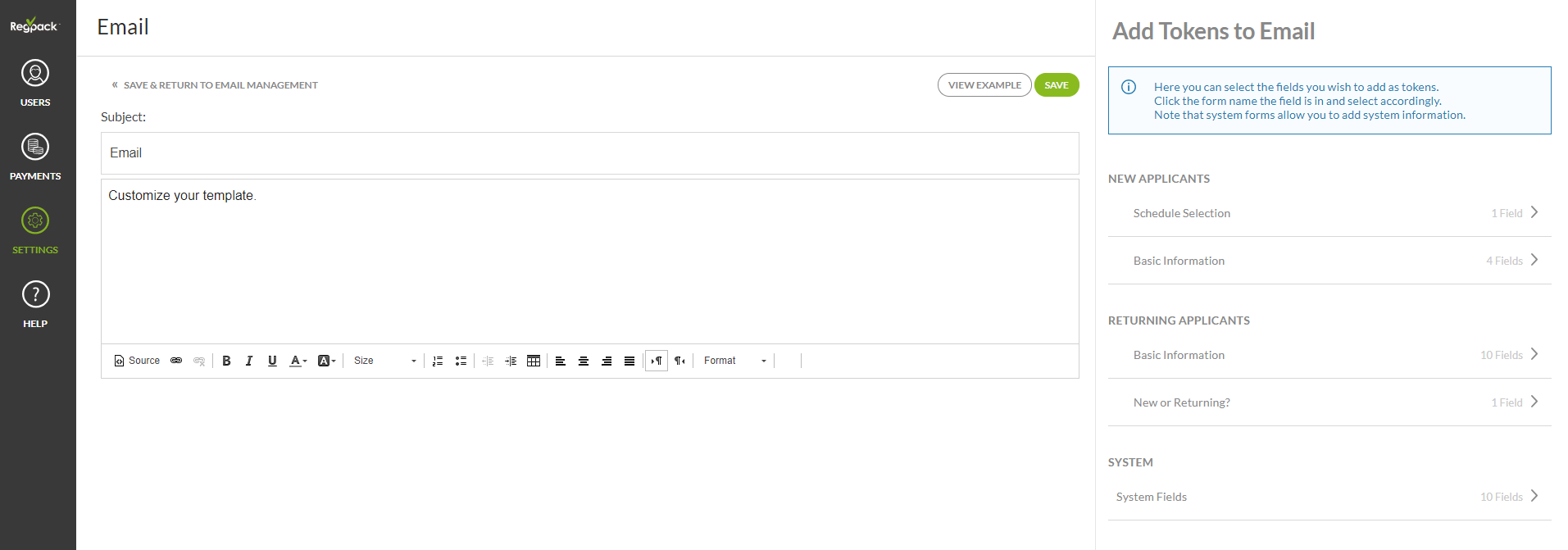
Source: Regpack
And the beauty of subscription billing is that even if changes take place in the middle of the billing cycle, you can add them to the unbilled charges for the next cycle.
In the middle of the subscription term, for instance, customers often:
- Change their subscription tier
- Purchase an add-on or one-time charge
- Add paid users
- Change the payment plan
But you don’t need to invoice for every new charge or change in the customer’s plan. Instead, add or alter those charges on the next scheduled invoice.
Insufficient Reporting Capabilities
Mistakes are part of life—but in your recurring billing system, it’s in everyone’s best interest to limit mistakes as much as possible.
After all, your customers might understand the occasional billing error, but as Paul Prebinski writes for Fusebill:
“As a business grows and the opportunities and scope for error broadens, a business model that’s overly reliant on its customers’ patience and goodwill isn’t sustainable.”
The more a subscription service struggles to bill its customers with accuracy, the more a customer’s experience deteriorates.
If that customer’s contact information, billing details, or charge amounts are incorrect, it makes sense that they would gradually lose trust in your company—and eventually, they’ll churn.
Clunky billing management systems can also mess with vital business metrics. Enough accidental underbilling can contribute to revenue leakage. Underbilling mistakes that can hurt your bottom line include:
- Customers being charged for a different (cheaper) plan than the one they’re actually using
- Price increases not being applied to existing customers’ accounts
- Expired coupons not being removed from a customer’s account
Revenue leakage can also be caused by poor data visibility and analytics. The more you understand and track your billing details, the more you can make the right decisions for your business as you scale.

Source: Regpack
For example, do you have a firm understanding of how pricing plan changes affect your bottom line? Do you know how much customer churn is too much? And which promotions and free trials work best?
Answering these questions is difficult without reports and dashboards that keep you in the loop about what works (and what doesn’t).
For example, a sales report can provide valuable insights to support your pricing strategy, product portfolio, promotional and retention activities, and more. Make sure to choose a payment provider that has reporting tools that let you customize each report to your needs.
Choose the Right Tools to Avoid Recurring Billing Mistakes
The subscription-based revenue model is attractive for a reason: it’s a way to create consistent cash flow and attract reliable customers.
Nevertheless, recurring billing comes with its own set of challenges—namely, that with more repetition, there’s more of a chance of human error and lost revenue to show for it.
That’s why you need to know the basic customer billing mistakes to avoid in your recurring billing system. Familiarize yourself with revenue recognition principles, dunning strategies, and invoicing best practices.
Finally, make use of billing systems that are flexible enough—and come with features like automation, reporting, and analytics—to handle your needs as you scale.





